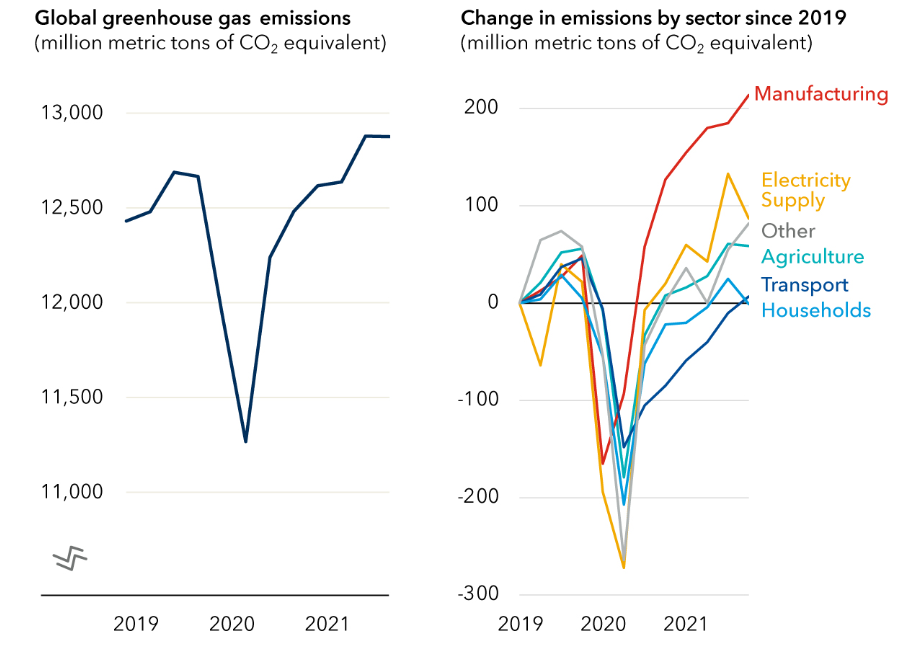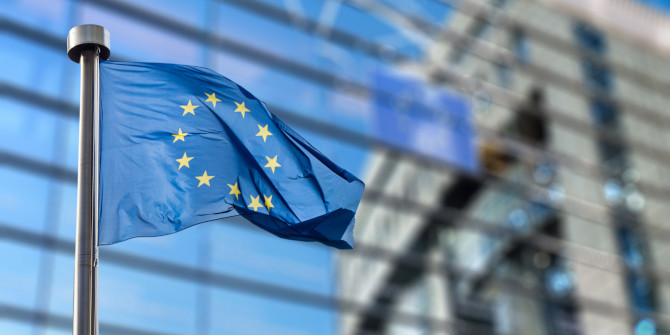Rising energy prices and reduced gas deliveries are putting European economies under strain. Dimitar Lilkov assesses whether these pressures are likely to have a negative impact on Europe’s climate policies.
The EU’s energy sector is in crisis. The decade-long Faustian bargain European capitals struck with Gazprom has made many EU states dependent on Russian gas and blinded them to the risks facing the continent’s energy security. Moscow’s weaponisation of gas exports has brought skyrocketing utility bills as the EU faces a series of tough choices for guaranteeing its energy supply. Given this backdrop, it is little wonder that concerns are now being raised about the impact on Europe’s long-term climate ambitions.
Triple damage
The energy crisis has negatively impacted the EU’s climate agenda in at least three ways. First, the gas crunch has necessitated a massive shift back to coal. Between January and August this year, thermal coal imports to the EU jumped by 35% compared to 2021. Currently, a third of German electricity comes from coal, while some people in Poland are queuing in front of mines so they can stock up for winter. Countries such as Greece and the Czech Republic are extending the lifespans of their coal-fired power plants and mining operations, while other countries are also considering similar U-turns. European policymakers pledge that these shifts are temporary, but the energy outlook is far from reassuring.
These negative trends in Europe have overlapped with a discernible rise in global greenhouse gas emissions (Figure 1). Last year saw the second biggest peak in overall emissions as the world registered a large rebound in coal and oil use. Even after decades of climate negotiations, fossil fuels continue to provide more than 80% of the world’s primary energy supply. The EU will potentially lose international credibility if its own member states come to rely on coal as an energy lifeline.
Figure 1: Trends in global greenhouse gas emissions (2019-22)
Source: IMF Climate Change Indicators Dashboard
Second, the financial implications of the energy crisis are immense. In the last twelve months, EU government allocated funding to shield households and businesses from rising energy expenses has surpassed 300 billion euros. Currently, Greece and Italy spend 4% and 3% of their annual GDP respectively on energy support schemes. Expect this figure to worsen in the coming winter months. In parallel, government debt-to-GDP is close to 100% in the Eurozone, while inflation is still rampant.
There was a hefty price tag on the EU’s sustainability agenda even before all of these events transpired. The Commission estimated that reaching the current EU 2030 climate targets would require additional investment of €260 billion per annum. This funding comes on top of the hundreds of billions of euros already committed to climate goals in the EU budget (Figure 2).
Figure 2: Funds committed to climate goals in the EU budget
Source: European Parliamentary Research Service
It is unclear how European governments will reach their 2030 pledges given the worsening economic outlook and skyrocketing prices for energy, technological components, and labour costs. Not to mention the negative impact for the private sector and its own appetite for clean investment.
Lastly, the convoluted role of natural gas should be put in perspective. Ironically, the huge quantities of Russian gas were part of the calculation that made the EU’s ambitious climate agenda possible. Countries such as Germany, Austria and Italy tapped into pipeline flows to ensure the competitiveness of their industries and satiate the growing energy needs of their economies. Natural gas, a methane-emitting fossil fuel, has been labelled a ‘transitory’ fuel in the quest towards carbon neutrality. Stopping the gas deliveries means a hole in the national energy mix and a blow to the sustainability agendas of EU states.
Avoiding friendly fire
Energy insecurity remains the biggest threat to the European Green Deal. Currently, liquefied natural gas shipments have compensated for some of the shortfall, but Europe doesn’t have the necessary infrastructure to make the full pivot in this direction. Additionally, this is a highly saturated (and expensive) market where global competitors have already secured long-term contracts.
Key European industries are already feeling the energy squeeze. Leading chemical, glass and metal producers are struggling across the continent, while about 70% of fertiliser production capacity has stalled. Mounting pressure might make European politicians succumb to energy nationalism and disregard the needs of their European allies.
A worst-case scenario entails a free-for-all where EU partners outbid each other for gas deliveries or decide unilaterally to negotiate a side-deal with Gazprom. The latter would mean breaking European unity and betraying the Ukrainian cause. The coming winter will be a litmus test not only for European solidarity but for the Union’s flexibility in achieving a federal response in a policy area that is not an exclusive competence of the EU.
A European Green Deal 2.0
The full detachment from Gazprom’s grip entails significant short-term economic pain, but considerable long-term gain for European energy security. However, do not expect any quick wins on the climate. In 2022 and 2023, the EU will most likely increase its collective greenhouse gas emissions and rely on fossil fuels to compensate its pressing energy needs. Politicians will try to accommodate the needs of industry, business and households first, with those of climate activists coming second. Following the UK’s example, some EU countries might be tempted to reopen the debate on shale gas and explore ways to boost domestic production. Others will increase pipeline flows from third-country exporters.
The sobering effect of the energy crisis on public finances might prompt policymakers to streamline some of their projected green investments. Renewables will remain an indispensable tool in the decarbonisation effort, but current solar/wind capacities continue to suffer from intermittency and lower power outputs. The EU might consider investing more in clean tech research and development as novel technology will have a pivotal role in the global transition (Figure 3). The biggest innovation opportunities concern advanced batteries and hydrogen electrolysers, as well as carbon capture and storage.
Figure 3: Annual carbon dioxide emissions savings in the net zero pathway, relative to 2020
Moreover, the European Green Deal shouldn’t remain a constantly increasing expense sheet, but should instead become an opportunity for the commercial success of European companies in innovating and exporting clean technologies. In parallel, the EU should double down on its efforts to overcome bottlenecks as new renewable projects can currently take up to a decade before becoming operational.
The energy shock will likely make the EU a bit more realistic about its own self-imposed greenhouse gas targets and the role of other international actors. Currently, the EU contributes around 7% of global emissions. As the global economic outlook worsens, it is unlikely the developing world will decisively turn to conventional renewables to satisfy their energy needs.
Here, the EU will have an important role to play in mobilising international climate funding and partnering with developing countries to provide access to better and cheaper renewable sources. Additionally, Brussels might look into expanding the role of its carbon border adjustment mechanism (CBAM). This mechanism has been proposed as a solution to carbon leakage but faces a number of legal challenges and potential opposition from third countries. The sensible solution in the long-run would be to try to open up a bigger climate front and include Washington in a joint EU-US CBAM equivalent that would have increased clout at the international level.
The current energy crunch will not cancel the EU’s climate agenda, but it will certainly change it. We should expect EU politicians to abandon the idealistic optimism of the last decade on the climate and embrace an attitude of pragmatic realism.
Note: This article gives the views of the author, not the position of EUROPP – European Politics and Policy or the London School of Economics. Featured image credit: © European Union, 2022







A interesting article, thanks for sharing. A few questions though –
This data appears to only show part of the story, due to cutting off the graphs in 2019 – the big dip shown is due to covid. Without that, usage in 2021 appears to have followed a similar slow rising trend (visually inspected the IMF graphs not statically analysed). You’re talking about increases in coal usage in 2021, but the majority of the energy crisis and Ukraine war started in 2022.
I’m interested to see how this impacts energy usage over winter this year; for example will households reduce energy consumption for fear of price rices, and if so does this have any positive impact on emissions this winter.